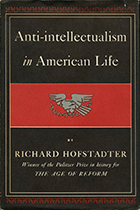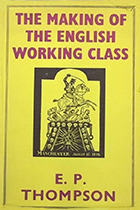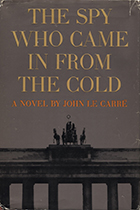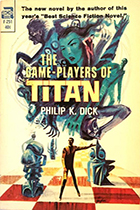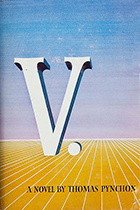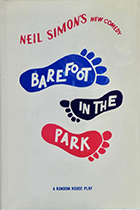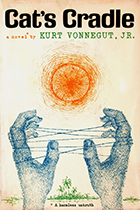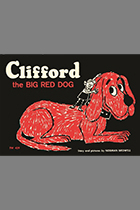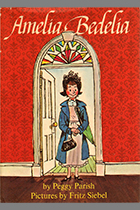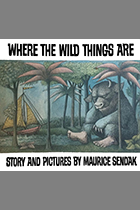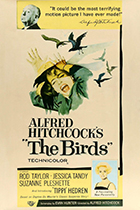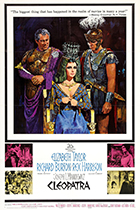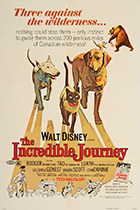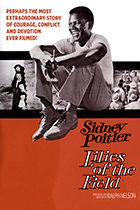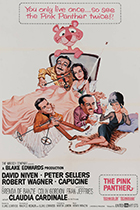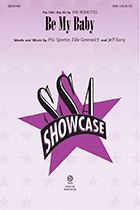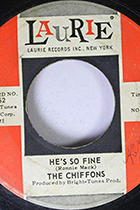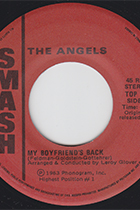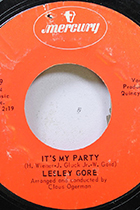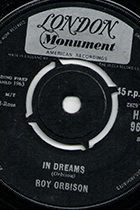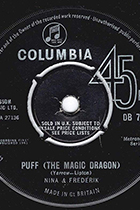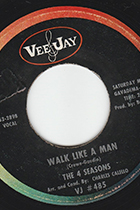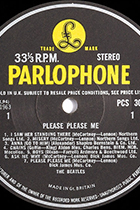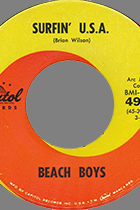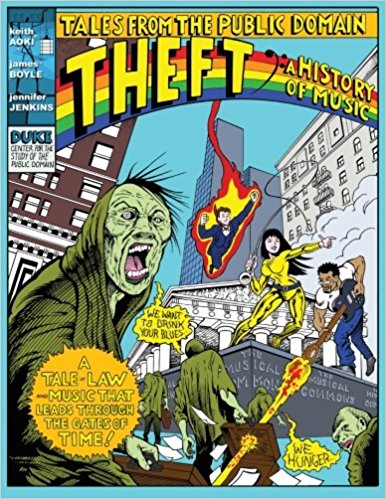
Public Domain Day 2020 Pre-1976
What Could Have Entered the Public Domain on January 1, 2020?
Under the law that existed until 1978 . . . Works from 1963 Tweet

Dr. King’s “I Have a Dream” speech, the books The Fire Next Time and Where the Wild Things Are, the film The Birds, songs from With the Beatles and The Freewheelin' Bob Dylan, and more. . .
Current US law extends copyright for 70 years after the date of the author’s death, and corporate “works-for-hire” are copyrighted for 95 years after publication. Prior to the 1976 Copyright Act (which became effective in 1978), the maximum copyright term was 56 years—an initial term of 28 years, renewable for another 28 years. Under those laws, works published in 1963 would enter the public domain on January 1, 2020. Under current copyright law, we’ll have to wait until 2059.1 Elsewhere on this site, we celebrate works from 1924 that will actually be entering the public domain in 2020, after a 95-year term. But 1924 was a long time ago—imagine if works from 1963 and earlier were “free as the air to common use”! Here’s what could have been.
Literary works
What literary works would be entering the public domain if we had the pre-1978 copyright laws? You might recognize some of the titles below.
Nonfiction
- Dr. Martin Luther King Jr., I Have a Dream
- James Baldwin, The Fire Next Time
- Betty Friedan, The Feminine Mystique
- Richard Hofstadter, Anti-intellectualism in American Life
- LeRoi Jones (Amiri Baraka), Blues People: Negro Music in White America
- E. P. Thompson, The Making of the English Working Class
Fiction
- John le Carré, The Spy Who Came in from the Cold
- Leonard Cohen (the songwriter was also an author), The Favourite Game
- Philip K. Dick, The Game-Players of Titan
- Thomas Pynchon, V.
- Neil Simon, Barefoot in the Park
- Walter Tevis, The Man Who Fell to Earth
- John Updike, The Centaur
- Kurt Vonnegut, Cat’s Cradle
- Charles Webb, The Graduate
Children’s books
- Norman Bridwell, Clifford the Big Red Dog (the first book in the series)
- Peggy Parish, Fritz Siebel (illus.), Amelia Bedelia (the first book in the series)
- Maurice Sendak, Where the Wild Things Are
What an astounding list. Dr. King’s estate has repeatedly enforced copyright in his “I Have A Dream” speech and other works, restricting their use by documentarians and nonprofits, among others. Under reasonable copyright terms, that speech would be “free at last.”
These are but a fraction of what would be entering the public domain on January 1. And this is the production of but a single year. Copyright term extensions have kept decades of such works from the public domain. Imagine these works being freely available to students, artists, and enthusiasts around the world. You could turn them into a play, or make them into a film. You could translate them into other languages. You could read them online or buy cheaper print editions, because others were free to republish them. (Empirical studies have shown that public domain books are less expensive, available in more editions and formats, and more likely to be in print—see here, here, and here.) Imagine a digital Library of Alexandria containing all of the world’s books from 1963 and earlier, where, thanks to technology, you can search, link, annotate, copy and paste. (Google Books has brought us closer to this reality, but for copyrighted books where there is no separate agreement with the copyright holder, it only shows three short snippets, not the whole book.) Instead of seeing these literary works enter the public domain in 2020, we will have to wait until 2059.
Movies
Here are a few of the movies from 1963 that would have become available this year.
- 8 1/2
- The Birds
- Cleopatra
- Disney’s The Incredible Journey and The Sword in the Stone
- From Russia with Love
- It’s a Mad, Mad, Mad, Mad World
- Lilies of the Field
- The Pink Panther
- Tom Jones
If they were in the public domain, community theaters could show the full features. Libraries and archivists would be free to digitize and preserve them. Artists could incorporate them into fan fiction. But we won’t see them in the public domain for another 39 years. The films above are famous, so thanks to projects like the National Film Registry, we’re not likely to lose them entirely. The true tragedy is that of forgotten films that are literally disintegrating while preservationists wait for their copyright terms to expire.2
Music
What music could you have freely used on January 1, 2020? 1963 brought us iconic albums by The Beatles, Bob Dylan, and the Beach Boys, and lots of other terrific music.
- Be My Baby, w & m Phil Spector, Ellie Greenwich & Jeff Barry
- Can I Get a Witness, w & m Brian Holland, Eddie Holland & Lamont Dozier
- He’s So Fine, w & m Ronald “Ronnie” Mack
- My Boyfriend’s Back, w & m Robert Feldman, Gerald Goldstein & Richard Gottehrer
- It’s My Party, w & m Wally Gold, Herb Wiener & John Gluck, Jr.
- In Dreams, w & m Roy Orbison
- Puff (the Magic Dragon), w & m Peter Yarrow & Leonard Lipton
- Walk Like a Man, w & m Bob Crewe & Bob Gaudio
- Songs from The Beatles’ albums Please, Please Me and With The Beatles
- Songs from The Beach Boys’ album Surfin’ U.S.A.
- Petite Fleur Africaine and other songs by Duke Ellington
You would be free to download sheet music for these songs, publicly perform them, or set a short film to them, all without permission or fee.3 You could quote the full lyrics in a book or article, without fear of a lawsuit. Today these musical works remain copyrighted until 2059.
“He’s So Fine” was the subject of a famous (or possibly infamous) copyright lawsuit, where former Beatle George Harrison was found liable for subconsciously copying part of its melody in his song “My Sweet Lord.” (This case is controversial because it was based on a guess about what happened in Harrison’s subconscious mind, and the assumption that he must have copied, even if he was unaware of it. Often, there are a limited number of musical combinations that will work in a given song, particularly with the constraints of genre, tradition, lyrics, etc. As a result, many songs inevitably sound similar, but those similarities may be the product of innocent coincidence rather than culpable copying.) When music goes into the public domain, songwriters do not have to second guess themselves if they write something that sounds similar, and worry that they might be unconsciously breaking the law.
Note that the list above refers to the “musical composition”—the underlying music and lyrics—and the songwriters who wrote them, such as Ronnie Mack for “He's So Fine.” It is those compositions that could have entered the public domain in 2020. Back in 1963, federal copyright law only covered compositions, and did not cover the "sound recordings" embodying particular performances of them, such as The Chiffons' performance of "He's So Fine." This has changed—under current law, compositions and sound recordings are covered by two separate copyrights.4 (To learn more about music copyright, and the rich history of borrowing in music, see our free comic book!)
Science from 1963—copyrighted research, still behind paywalls
A distressing number of scientific articles from 1963 are still behind a paywall. To read them, you have to pay a fee, or have a subscription or account.5 Nature charges $32 for a single PDF from 1963. JAMA charges $30. Science requires $30 to access a single article from 1963 for 1 day—but that’s not all. When you purchase digital access to a Science article, you also have to agree to the following restrictions and conditions: “You may view, download, and/or print the article for your personal scholarly, research, and educational use,” but may not distribute or post it, and you must agree both to accept cookies and be contacted from time to time about the publisher’s products. Of course, many scientists will have institutional access to these journals, but this access is not guaranteed—even institutions such as Harvard have considered canceling their subscriptions because they could no longer afford the escalating prices of major journal subscriptions. (To learn more about how this publishing model impedes science, and the need for open access to research and scholarship, you can watch the recent documentary Paywall: The Business of Scholarship.)
It’s remarkable to find scientific research from 1963 hidden behind publisher paywalls. Thankfully, some publishers have made older articles available in full online, so that you can read them, even though it may still be illegal to copy and distribute them. In addition, some older articles have been made available on third party websites, but this is not a stable solution for providing reliable access to science. Third party postings can be difficult to find or taken down, links can get broken, and would-be posters may be deterred by the risk of a lawsuit. Under the pre-1978 copyright term, all of this history would be free to scholars, students, and enthusiasts.
Not all scientific publishers work under this kind of copyright scheme. “Open Access” scientific publications, like those of the Public Library of Science, are under Creative Commons licenses, meaning that they can be copied freely from the day they are published.
Works from 1991!
Most of the works highlighted here are famous—that is why we included them. And if that fame meant that the work was still being exploited commercially 28 years after its publication, the rights holders would probably renew the copyright. But we know from empirical studies that 85% of authors did not renew their copyrights (for books, the number is even higher—93% did not renew), since most works exhaust their commercial value very quickly.
Under the law that existed until 1978 . . . Up to 85% of all copyrighted works from 1991 might have been entering the public domain on January 1, 2020.
That means that all of these examples from 1963 are only the tip of the iceberg. If the pre-1978 laws were still in effect, we could have seen 85% of the works published in 1991 enter the public domain on January 1, 2020. Imagine what that would mean to our archives, our libraries, our schools and our culture. Such works could be digitized, preserved, and made available for education, for research, for future creators. Instead, they will remain under copyright for decades to come.
Perhaps the most troubling aspect of the current copyright term is that in most cases, the cultural harm is not offset by any benefit to an author or rights holder. Unlike the famous works highlighted here, the vast majority of works from 1963 do not retain commercial value,6 but they are off limits to users who do not want to risk a copyright lawsuit. This means that no one is benefiting from continued copyright, while the works remain both commercially unavailable and culturally off limits. The public loses the possibility of meaningful access for no good reason. You can read more about the current costs associated with orphan works—works that are still presumably under copyright, but with no identifiable or locatable copyright holder—here and here. Importantly, the US Copyright Office has been engaged in efforts to find solutions to the orphan works problem. However, unlike other countries, the US has not enacted any such solutions.
1 The Copyright Term Extension Act expanded the term for works published in 1963 to 95 years from the date of publication, so long as the works were published with a copyright notice and the term renewed (which is generally the case with famous works such as those we are highlighting).
Many works published in 1963 are already in the public domain because the copyright holder did not comply with notice, renewal, or other copyright formalities. However, tracking down this information can be difficult (you can read just one of many illustrative examples collected by the Copyright Office here). Therefore, users often have to presume these works are copyrighted or risk a lawsuit (only works published before 1925 are conclusively in the public domain). You can read more about copyright terms from this excellent chart and from the US Copyright Office’s guide.
It is also difficult to determine whether foreign works are in the public domain in the U.S. Generally speaking, as a result of international agreements, foreign works published after 1924 are still under copyright in the US as long as one of the following is true: they were published in compliance with US formalities, they were still copyrighted in their home countries as of 1996, or they were then published in the US within 30 days of publication abroad. You can learn more about copyright terms for foreign works from the Copyright Office guide here.
2 The law allows libraries and archives (not preservationists generally) to digitize works during the last 20 years of their copyright term, but only in limited circumstances: the library or archive first has to determine through a “reasonable investigation” that the work is not being commercially exploited and that they cannot obtain another copy of it at a reasonable price.
3 Copyright law has a “compulsory license” that allows people to make recordings of in-copyright compositions if they pay a standard royalty and comply with the license terms. However, this compulsory license doesn’t cover printing sheet music, making public performances, synchronizing audio with video, or making “derivative works.” And, of course, it requires payment; public domain compositions can be freely recorded.
4 Federal copyright did not cover sound recordings until 1972 (though pre-1972 sound recordings were protected under some states’ laws). However, a new law from 2018 called the Music Modernization Act (“MMA”) has federalized copyright for pre-1972 sound recordings, in order to clear up the confusing patchwork of state law protection. It gives sound recordings from the 1960s federal copyright protection until February 15, 2067. Importantly however, unlike the rest of copyright law, the MMA allows for uses of orphan works: if those older recordings are not being commercially exploited, there is a process for lawfully engaging in noncommercial uses. For more information, please see the Copyright Office’s summary. Note that if you are performing or rerecording a song, quoting its lyrics, or writing a new version, you are only using the musical composition, not the sound recording. Rights over sound recordings are implicated only if you use that particular performance of the song, for example by “sampling” it or using it as a soundtrack.
5 Sometimes you can see the first archived journal article you choose, but the remaining articles are behind a paywall. And even when 1963 articles are readable, they’re still copyrighted—these publishers won’t allow you to reproduce or distribute them without permission.
6 A Congressional Research Service study indicated that only 2% of works between 55 and 75 years old continue to retain commercial value. As explained above, many works from 1963 are technically in the public domain, but it is often difficult to conclusively determine public domain status, so users have to presume that they’re still under copyright.
 Public Domain Day 2020 by Duke Law School's Center for the Study of the Public Domain is licensed under a Creative Commons Attribution-ShareAlike 3.0 Unported License.
Public Domain Day 2020 by Duke Law School's Center for the Study of the Public Domain is licensed under a Creative Commons Attribution-ShareAlike 3.0 Unported License.






